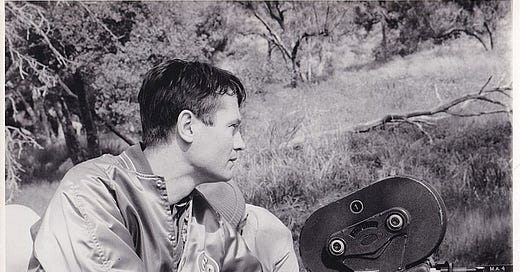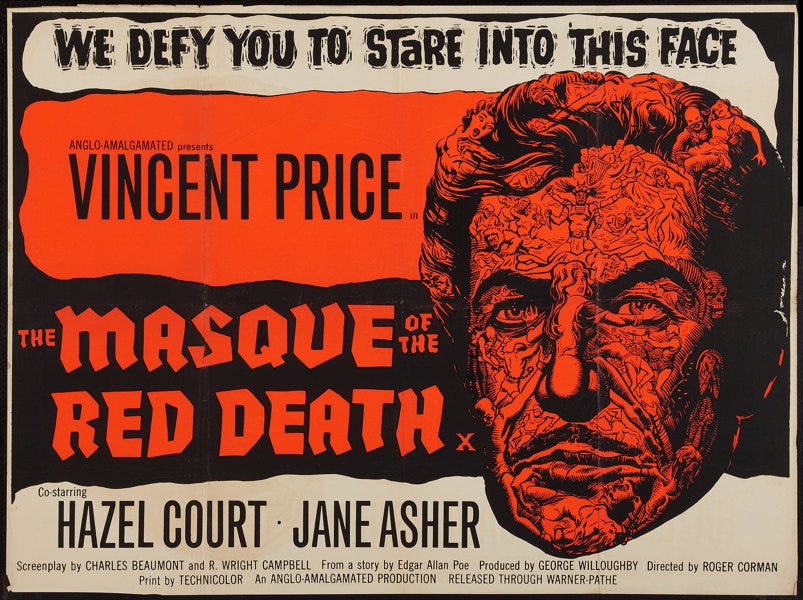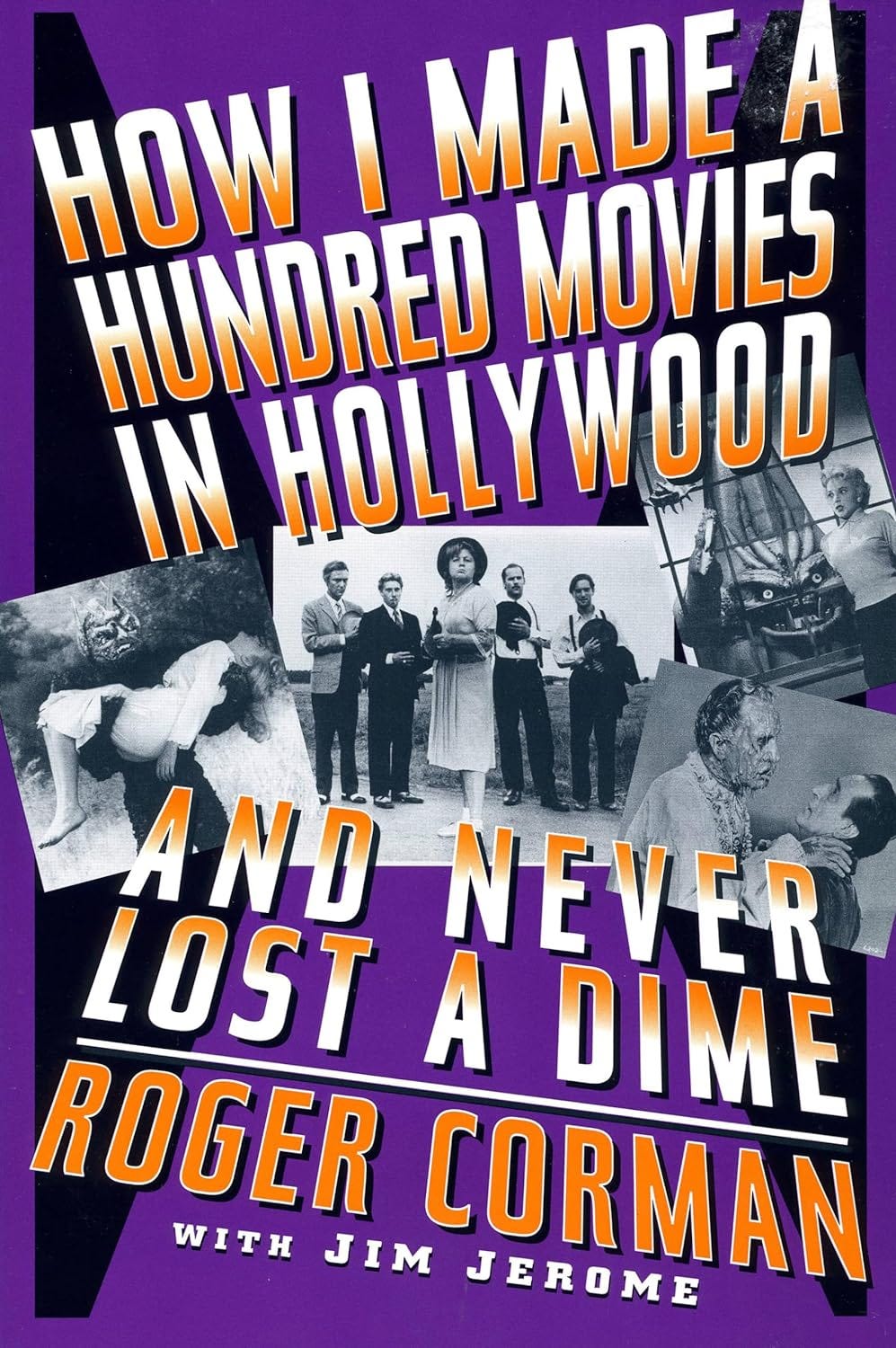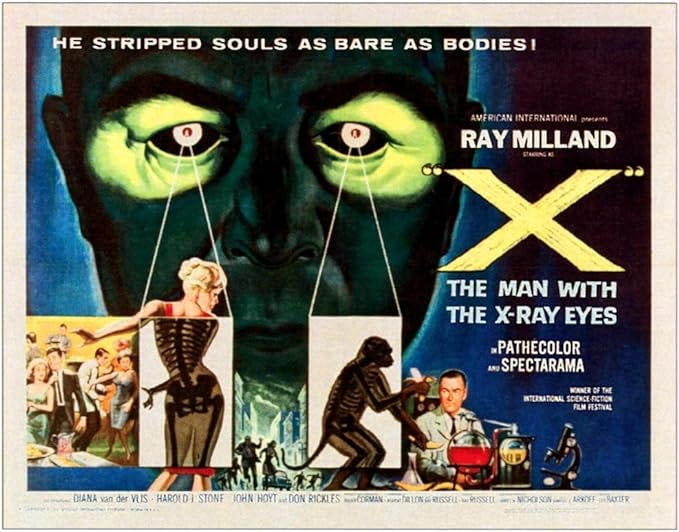The Astonishing World of Roger Corman
Celebrating the "King of the B-Movies," who passed away last week aged 98

Several years ago, there existed a channel here in the UK called The Horror Channel. Mostly it showed movies like Sharknado and Titanic 2 (yep, that’s a real film), but occasionally they would dig into the archives and screen an old classic. One night my brother and I were up late and looking for something to watch, and tuned into The Horror Channel just in time for the start of a film called The Masque of the Red Death.
It's very rare that I can say I’ve been astonished by a film, but The Masque of the Red Death was astonishing. Based on a short story by Edgar Allan Poe, the film tells the tale of the evil Prince Prospero, who lives a decadent, depraved existence in his castle while the village he rules is ravaged by a deadly plague.
The visual style of the film seems designed to provoke a reaction of disgust, filled as it is with garish, sickly colours and people gorging themselves on vast banquets. The Masque of the Red Death is hardly violent or explicit by today’s standards, and yet there’s something about it that remains shocking.
This was my introduction to the films of Roger Corman – the king of the B-movies, whose autobiography, which my sister kindly bought for me a few years ago, is titled How I Made A Hundred Movies in Hollywood and Never Lost a Dime.
I’ve only just started reading it, but so far it feels like the book was written in the same spirit of businesslike efficiency that Corman brought to his films. There’s been minimal discussion of his personal life, but plenty of detailed explanation of how to finance and create imaginative, successful films on a shoestring budget.
I especially like the quote “A favourite device of mine when a film makes no sense is to add narration.”
Attention is also paid to Corman’s role as a mentor to aspiring directors and actors. People who worked under Corman in their early years include the likes of Martin Scorsese, Francis Ford Coppola, James Cameron, Robert De Niro and Jack Nicholson.
I soon learned that The Masque of the Red Death was one of eight Edgar Allen Poe adaptations that Corman directed in the 1960s. In true Corman style, all these films were released within a span of just four years, each made on a minuscule budget (the final film in the series, The Tomb of Ligeia, reportedly cost just $150,000).
The Poe movies often feature Vincent Price gradually losing his mind in a sinister old mansion, which usually burns down at the end of the film, complete with the same stock footage of a burning roof collapsing (in these pre-home video days, filmmakers had much more freedom to repeat themselves). Nevertheless, there’s enough variation to make each entry unique from the others.
Another Corman film I saw around this time was X: The Man with the X-Ray Eyes. A sci-fi horror film, it stars Ray Milland as Dr James Xavier, a scientist attempting to expand the limits of human sight. Dr Xavier invents an eye drop that gives the recipient x-ray vision, but things take a turn for the worse when he begins experimenting on himself. The eye drops work too well, and soon Xavier finds himself cursed with the ability to see everything all at once.
It’s a horrifying concept, which comes to a head in a scene where an exhausted Xavier finally finds a dark room where he can rest. Closing his eyes to get some sleep, he finds himself looking through his eyelids, through the ceiling, through the roof, and directly into the sun. It’s been a long time since I’ve watched that film, but I remember that scene vividly.
Roger Corman was probably best known for his horror films, but the most remarkable film of his I’ve seen is a tense drama called The Intruder, released in 1962 and starring a pre-Star Trek William Shatner.
This film is set in a small southern town where schools are about to be desegregated for the first time. The townspeople are generally accepting of the new law, if grudgingly so – that is, until a charismatic stranger named Adam Cramer rides into town, playing on the locals’ fears and prejudices to whip them into a frenzy of violence, seemingly for no reason other than the thrill of having influence over a crowd. Eventually, after a very close call, the town comes to its senses and advises Cramer to take the next bus out of town.
Strangely, Roger Corman popped into my mind just last week, and I typed his name into Google to see if he was still active. I was happy to find that Corman had been making public appearances until very recently, still sharp and possessed of an elephantine memory of his many projects. I would say rest in peace, but I am certain he has no plans on resting and is already busy shoring up the finances for his next film.
Here is Roger telling a funny story about his extremely logical reaction to receiving a death threat from the Hell’s Angels, whom he had worked with on the film “The Wild Angels” (1966):
A YouTube playlist of full Roger Corman films - with titles like “Attack of the Crab Monsters,” “The Wasp Woman,” and “Teenage Caveman” - can be found here






